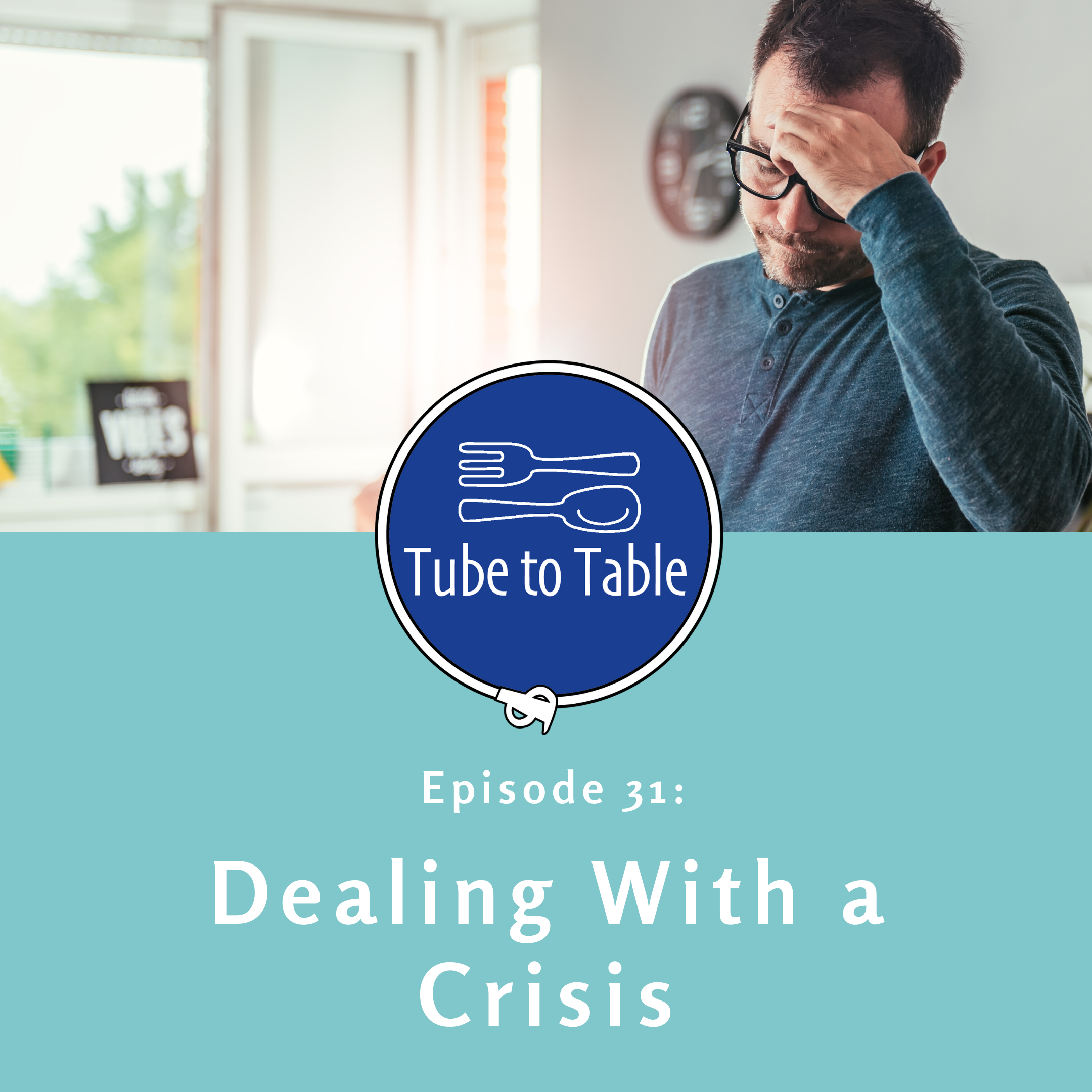Tube to Table Podcast: Episode 31: Dealing With a Crisis
February 20, 2020
Posted in: Feeding, Feeding Tube Weaning, Tube To Table Podcast
On this week’s episode, Heidi is joined by Brianna Brown, a feeding therapist and member of the Thrive Tube Weaning Team. To follow up with last week’s topic on anxiety, Brianna and Heidi are discussing how to move forward when there is an actual problem or crisis during a tube wean. Anxiety and the feeling of a crisis are common during tube weaning in all families with children of all ages. Although the problem may be different for each family, there are common strategies that we find very important. Brianna and Heidi will discuss why addressing your mindset is so important when starting to address the problem and how our therapists can help parents through that while weaning. There are many things to consider when working with families, but the 3 most important things are: building a team, focusing on communication, and sticking to the facts. Throughout this episode, Brianna and Heidi will break down these three strategies and how they relate to tube weaning.
You can download this episode from Itunes, Stitcher, Spotify, Google Play, or listen to it below:
Last week, Jamie and Heidi spoke about how anxiety and worrying are related during tube weaning. During this episode, one of the first steps to addressing anxiety is to ask if the problem is a “today” problem or a real problem. So what happens when it is? Heidi and Brianna focus on what to do when a real problem has to be addressed.
Communication:
At Thrive, we find the coaching model very helpful when conversing with parents and working as a team to gather information.
- This may look like asking a lot of questions, but it offers an open dialogue to help solve problems and discuss with parents.
- Although we find the coaching model very helpful, it is important to address how we are communicating with families.
- It is important to be more direct in the moments when there is more worry or anxiety. This helps to take out some of the emotion when there is anxiety around a problem
Building a Team:
It is important to know that there is someone who you can have clear communication with as part of your team. Some people may add to the chaos or anxiety, while other members of your team may help to calm everyone down.
- There can be a lot going on throughout a tube wean, so taking the time to establish a team that is supportive and helpful, even within the chaos, is so important.
- There are ways to form questions or comments that can sometimes fuel the fire or start a spin in someone’s head. It is crucial to be mindful about what works best for you, and clearly communicate that with your team.
Sticking to the Facts
With so much going on during a wean, it is so important to take a step back and look at the facts. It is helpful to pull yourself out of the crisis if possible and write down what are the things we know that are true vs. not true. By doing this and addressing what is not true, it can help a crisis feel less overwhelming.
- With the team that you have created and feel supported by, go over the facts and make a list to identify if what you are working about is worth it vs.
- There may be something that happens and it’s important to try and have a plan in advance, so that when it comes up, the team can look at the facts to make a plan.
- At Thrive, all of our weans start with a plan for looking in advance at parameters (possible constipation, dehydration, low energy, etc.)
Decision Making Process with the Team:
After following the above steps and identifying all of the facts, you and your therapists can come together as a team and make a plan for the facts what we know. Once that plan has been made, the door can be closed and a decision can be made.
- Sometimes there are new facts that may come in later or might change, but it is important to focus on the next steps and be okay with the initial decisions made, then make a plan if needed.
- It can be difficult to know where to start or what is the next right thing, but keep in mind that there are many things we have control over (such as identifying the initial problem and working together to unravel how to address each piece).
- Reassessing is something that therapists have started to use more and more, in order to come back to the decision and identify what the next step is.

Be the first to comment